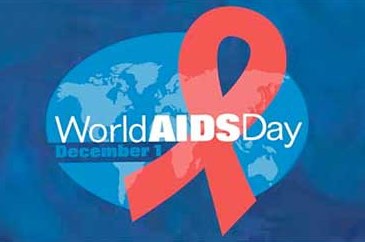
Today, December 1, is World AIDS Day. There is much to celebrate in the scientific battle to understand and fight HIV. Antiretroviral therapy has made HIV a treatable and livable condition. Clinical trials are currently testing antibodies to the virus that may soon produce a vaccine. But even with increasing biomedical knowledge of the virus itself and how to counteract or clear it from the body, the first line of defense is prevention.
Decades of public health awareness about the dangers of unprotected sex have had an impact on reducing the spread of HIV, which is still mainly transmitted sexually; but in 2010, eight percent of new cases were a result of injection drug use. One of the best available strategies for reducing the spread of HIV among drug users is syringe-exchange programs (also called syringe service programs); their effectiveness has been proven through abundant research. When syringe exchange was finally implemented in southern Indiana last year, for instance, it was a major factor in bringing the HIV outbreak in Scott County under control. But while the science of how to prevent HIV transmission is solid, misconceptions about these programs have prevented wider implementation and limited their public health impact.
Critics charge that harm-reduction strategies like syringe exchange programs will increase drug use, but study after study, both in the U.S. and other countries, has shown that this is not the case. Such programs are also sometimes opposed philosophically, being viewed as a public endorsement of drug use. This view arises from a moral framing of addiction as opposed to a medical framing. When injecting heroin or prescription opioids is seen as a lapse of morals and willpower, any concession to this practice by dispensing clean syringes is seen as condoning an immoral and illegal behavior.
But few people inject opioids—including prescription pain relievers and heroin—unless they have an addiction, and the science is clear that addiction is a medical, not a moral issue. Because of severely compromised brain circuitry, the ability of a person with an addiction to exert control over their drug use is greatly diminished. Without treatment, the individual is usually unable to stop on their own; thus until they get help, they are at risk for a range of adverse and even life-threatening outcomes. Syringe exchange, as part of a comprehensive prevention program, minimizes the risks injection drug users will contract HIV or hepatitis C (HCV) infection or spread them to other people in the community.
Syringe exchange programs connect the population of injection drug users with healthcare, providing HIV screening and treatment and counseling, and, importantly they provide an opportunity for reaching out to people with addictions and encouraging them to engage in substance use disorder treatment. When an individual’s substance use can be addressed, their risk of contracting HIV and other infectious diseases like HCV, or transmitting them to others in the community, is also lessened—the principle known as “treatment as prevention.” Failure to implement programs that will reduce these risks is irresponsible from a public health perspective.
Thus the benefits from syringe exchange programs are multi-faceted, reducing the transmission of HIV, HCV, and other infectious diseases as well as increasing access to treatment for drug addiction. However, it requires a realistic mindset in our society’s approach to drug use and addiction. Syringe exchange, by itself, may not reduce drug use. But denying injection drug users clean injection equipment does nothing to lessen or discourage their drug use—it only makes another public health crisis, such as another HIV outbreak and the undeterred expansion of HCV, more likely. Such crises do not only affect the individuals who contract the disease. According to the Centers for Disease Control and Prevention, lifetime treatment cost of a single case of HIV infection is $379,668; the costs of treating the patients who contracted HIV and HCV in Scott County over the next decades are expected to approach $90 million.
Unfortunately, recent research has shown that rural areas are very poorly served by syringe service programs compared to urban settings, even though about half of injection drug users are rural. A CDC report released this week showed that the demographic shift among people who inject drugs toward more white and rural populations, who are more likely to engage in needle sharing in part because of limited access to syringe service programs, threatens to undo the recent gains made in reducing the number of new HIV diagnoses.
As we consider how far we’ve come in addressing HIV/AIDS, we should ensure that scientific evidence is guiding our efforts to achieving the first HIV-free generation. We must make sure that public health officials across the country know how effective harm-reduction strategies such as syringe service programs are and address lingering misconceptions that have hindered implementing them. As highlighted in the recent Surgeon General’s report, Facing Addiction in America, how we respond to this crisis is a moral test for our country. We must be guided by the best available science to develop realistic solutions to reduce drug use, addiction, and associated health risks like HIV.